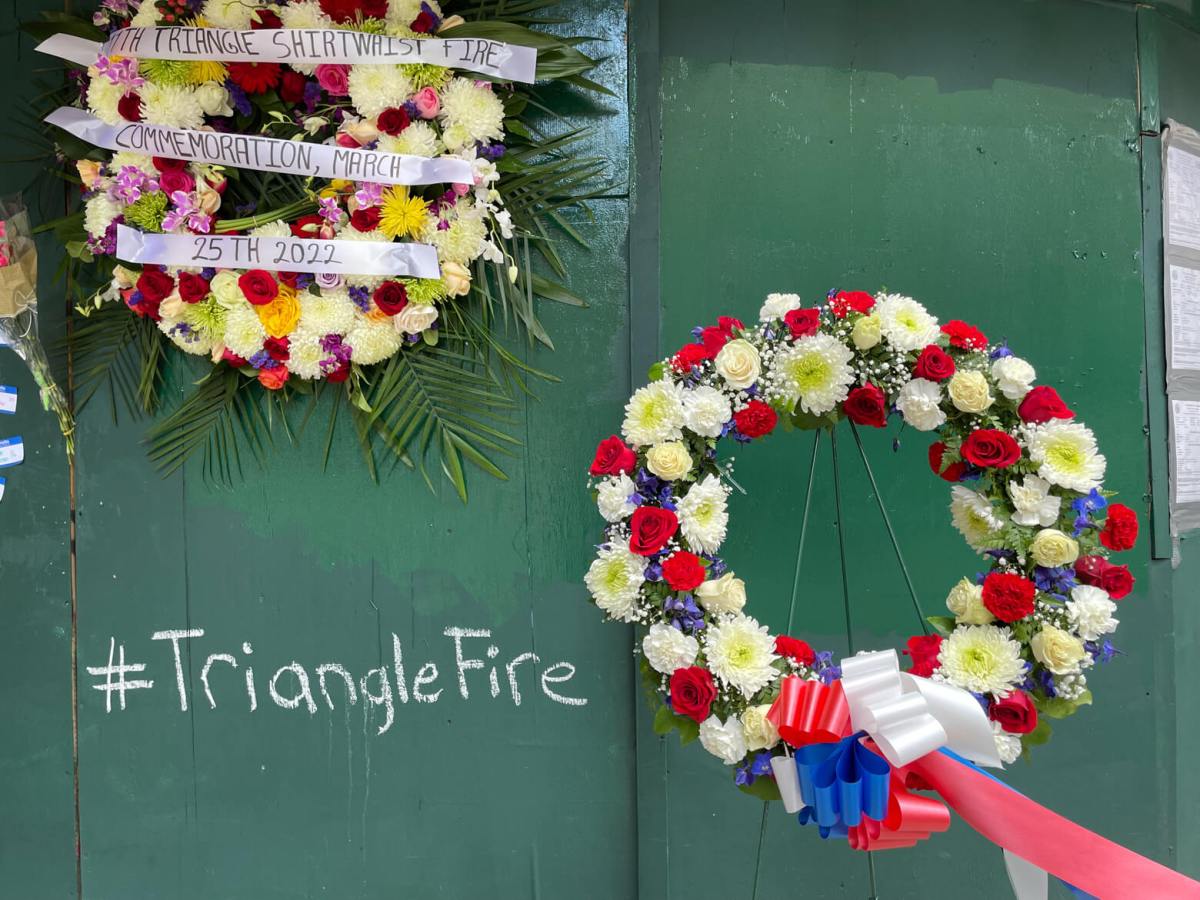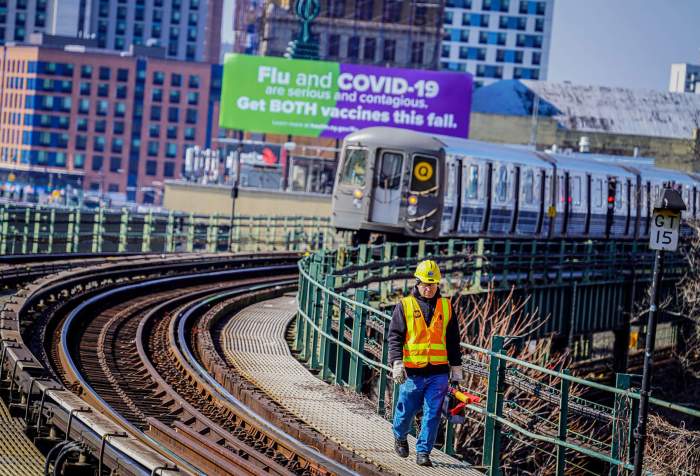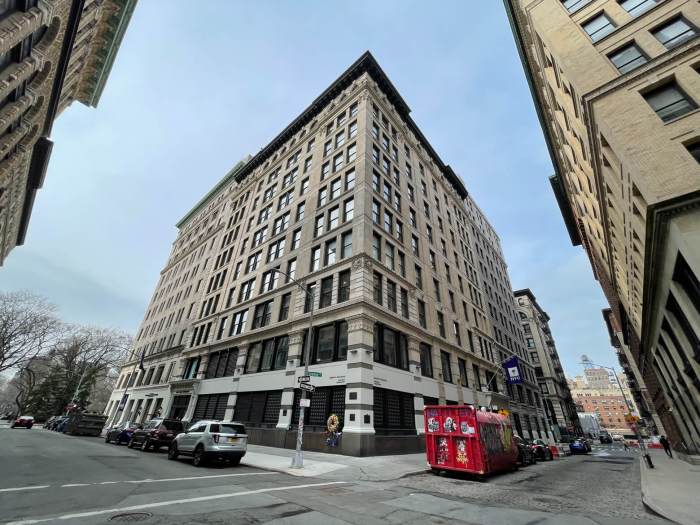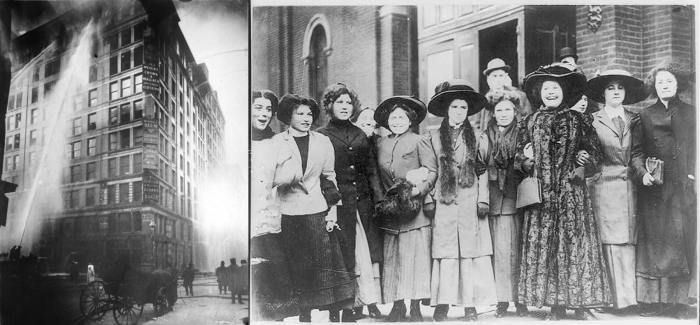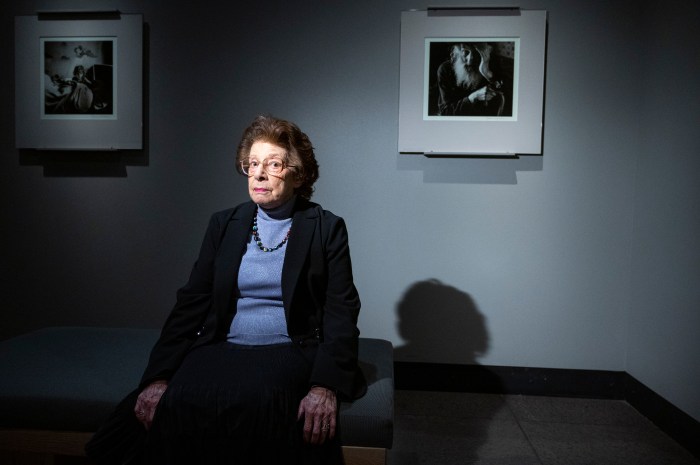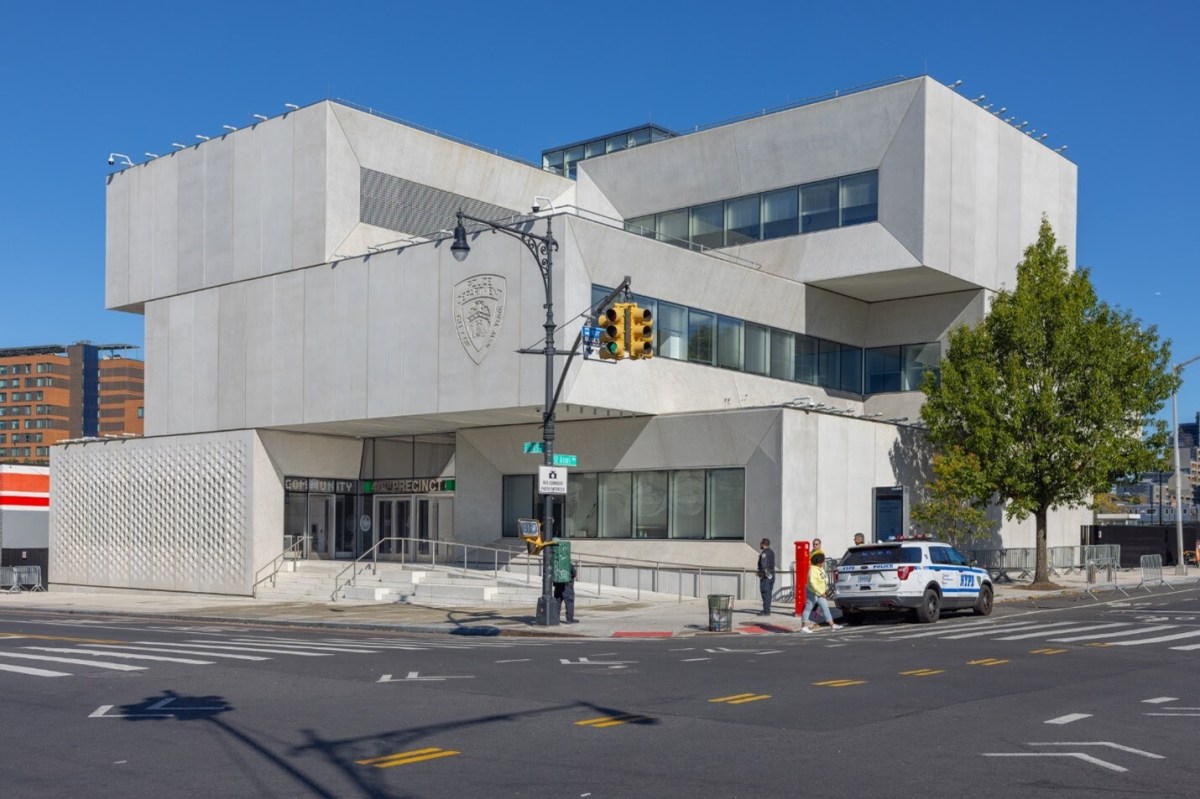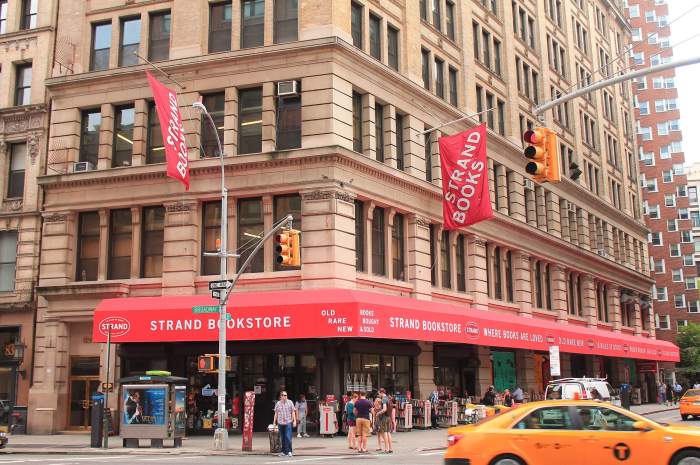Neither a COVID resurgence or construction sheds at the site of the Triangle Shirtwaist Factory fire—Greene St. and Washington Place— stopped committed activists from marking the anniversary of one of the deadliest industrial accidents in U. S. history.
One hundred forty-six garment workers, mostly young Jewish and Italian immigrants, died when locked stairwells and exits prevented their escape from a fire at the Triangle Shirtwaist Factory. Firetruck ladders reached only the sixth floor, while fire engulfed the upper floors. Workers on the 8th and 9th floor either burned or jumped to their death to escape the flames. The youngest was 14, the oldest 43—123 women and girls and 23 men.
On the anniversary date March 25, across the street from the actual building— NYU’s Brown Building then named the Asch Building, the names of those who died were written in chalk on the sidewalk. Later that afternoon, carnations appeared, each with the name of one who perished.
Currently, green construction sheds wrap around the building. There are major fortifications of the building’s foundation, getting ready for the construction of the Triangle Shirtwaist Factory Fire Memorial, 10 years in the planning. It is hoped by next year’s anniversary, the Memorial will be completed.
Wreaths attached to a shed this year mark the date and its significance.
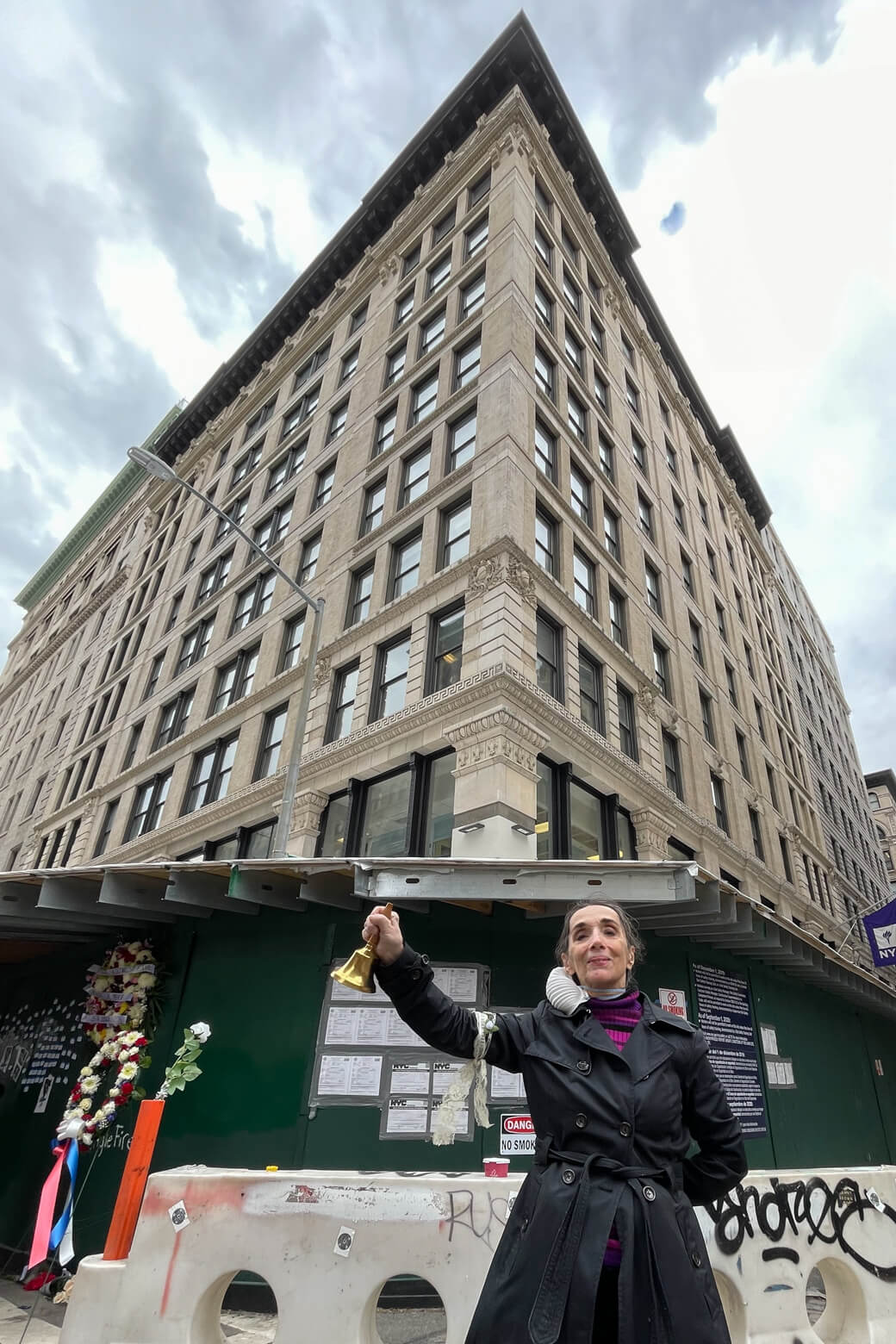
Labor historian Dan Katz stopped his walking tour across the street to give a comprehensive history of what led up to and followed the tragic event. He mentioned how a funeral procession for the seven unidentified victims, burned beyond recognition, took place 11 days after the fire on April 5, 1911.
Mourners—family members, friends, union organizers, and protestors— numbering 150,000 walked from Washington Square Park up Fifth Avenue with 250,000 onlookers lining the route. One in 10 New Yorkers were present for the procession.
[A century after the fire, the remaining six have been identified thanks to persistent researcher Michael Hirsch, while living in the East Village. He spent four years of research utilizing translations of Yiddish and Italian newspapers, discovering names of people reported still missing and their descendants, public records, licenses and certificates, plus cross-referencing names and graves.]
The fire led to building codes and labor laws, improved factory safety standards and helped spur the growth of the ILGWU-the International Ladies’ Garment Workers’ Union.
This year’s tributes are particularly poignant as activist friends remembered veteran labor leader Ed Vargas who passed away from cancer last year. For decades, Ed Vargas coordinated the annual ceremony honoring the victims of the 1911 Triangle Shirtwaist Factory fire. In the afternoon of Friday, March 25, those who worked and loved him met at the Factory site to toast him.
Early Friday evening, a virtual Triangle Fire program in lieu of the annual on-site commemoration took place. Middle school students from Long Island relayed the history of the fire. Poet Tanya Beltran recited the heartfelt The Bronx Still Burns in the Cold, referencing the Twin Parks high-rise fire, this past January. Linca Franca performed a contemporary music video, Which Side are You On?
Ongoing labor struggles in Alabama, with Amazon and Starbucks were acknowledged. The Shirtwaist Factory elevator operators—building personnel who saved lives during the fire—were pointed out as essential workers.
The moving tribute to Ed Vargas listed initiatives he instituted for the Triangle Fire commemorations—children from local schools began to participate and the FDNY and Department of Labor were incorporated in the annual anniversary program. Rest in power Ed Vargas!
As it happened at the time of the fire, Mount Holyoke grad Frances Perkins, 31, from a New England, middle-class family, who was working at the Consumers’ League of New York lobbying to end child labor, witnessed the fire and workers escaping flames by jumping to their death. A collective outpouring of outrage swept the city. For Frances Perkins, the Triangle Factory fire was a major event that defined her life.
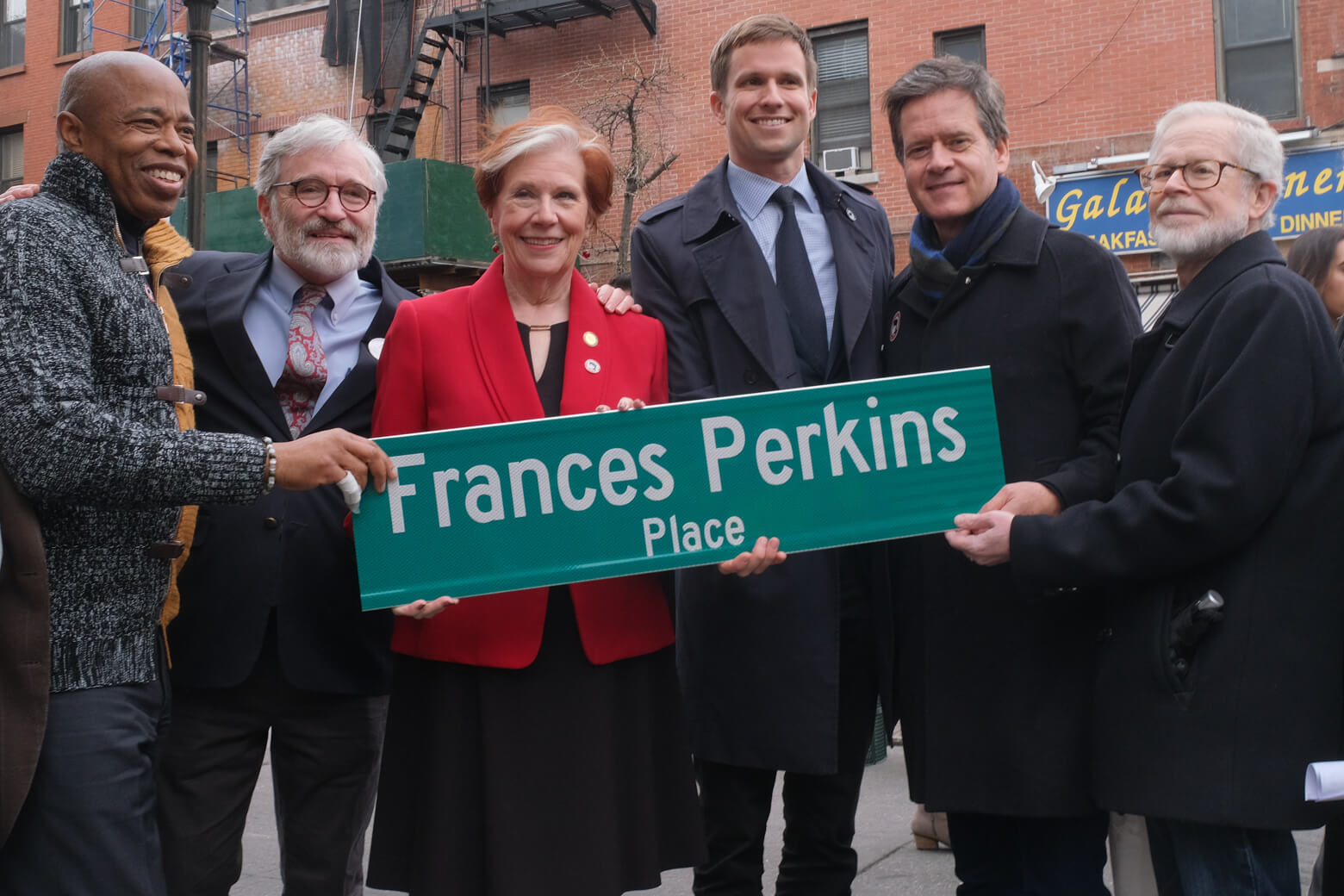
This past Saturday, the day after the Triangle Fire commemorations, New Yorkers gathered to co-name W. 40th St. between 9th and 10th Avenues Frances Perkins Place. It is the block where Perkins first lived in New York City, in Hartley House.
Councilman Erik Bottcher welcomed the assembled, “It is a true honor unveiling Frances Perkins Place outside of Hartley House, her former residence in Hell’s Kitchen! Few Americans have had more of a positive impact on our daily lives than Frances Perkins as Secretary of Labor under FDR.”
He continued by listing her impact: architect of Social Security; creating the federal minimum wage, unemployment insurance, the 40-hour work week and abolishing child labor.
As Secretary of Labor under Roosevelt, Frances Perkins was the first woman cabinet appointment in the history of the United States. She served from 1933-1945. Her contributions to all Americans’ welfare are incalculable.
Mayor Adams then spoke, commenting how Perkins transformed a painful moment into a purposeful moment. “We all benefited from it. It almost changed the landscape of employment, of safe spaces for employees.” He acknowledged the role she played on humankind in the city through her perseverance. He also attested to the resilience of New Yorkers in coming back from COVID.
State Department of Labor Secretary Roberta Reardon, Hell’s Kitchen historian James Kaplan and Frances Perkins’ grandson Tomlin Coggeshall, founder of the Frances Perkins Center, were among those who spoke at the street co-naming before unveiling the sign.



